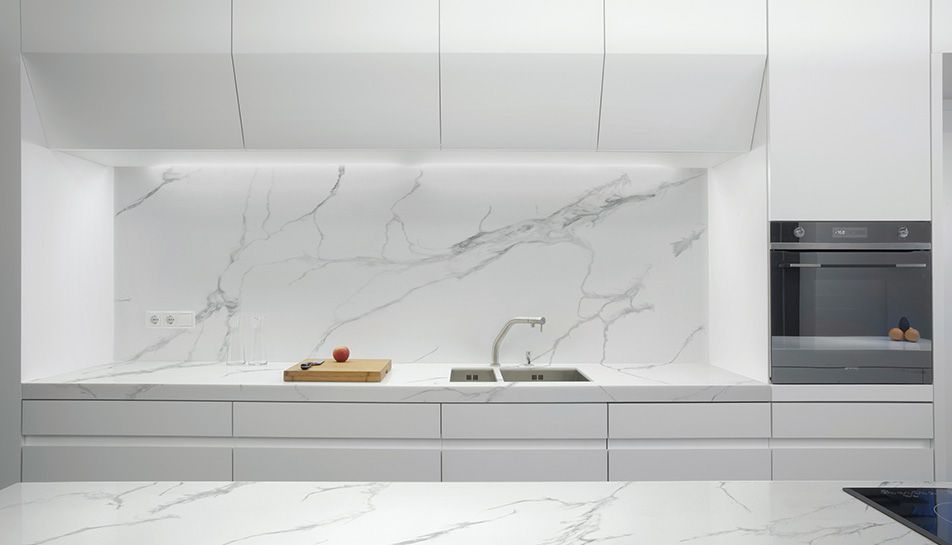Quartz countertops have become a popular choice for homeowners due to their durability, aesthetic appeal, and low maintenance requirements. However, when it comes to installation, cutting quartz countertops to fit your kitchen layout may incur additional costs.
Custom Cut Quartz Countertop

1. Size and Complexity:The size and complexity of the countertop cuts needed for your kitchen layout are primary factors influencing the cost. Larger countertops or intricate cuts, such as curves or notches for sinks and cooktops, require more time and labor, leading to higher costs.
2. Material Thickness:Quartz countertops come in various thicknesses, typically ranging from 1/2 inch to 1-1/4 inch. Thicker slabs require more precise cutting and may incur higher costs compared to thinner slabs.
3. Edge Profiles:Custom edge profiles, such as bullnose, beveled, or ogee, add aesthetic appeal to the countertops but may increase the overall cost of cutting. Intricate edge profiles require specialized cutting tools and skilled craftsmanship, contributing to higher labor costs.
4. Sink and Cooktop Cutouts:Cutting quartz countertops to accommodate sinks, cooktops, and other fixtures involves precise measurements and careful planning. The complexity of the cutouts, such as undermount versus drop-in sinks, can affect the cost of cutting.
Additional reading:Construction & Real EstateWhite Quartz Countertops with SparkleIs High Silica Welding Fabric the Future of Fabrication Techniques?Green Fiberglass Mesh: The Ultimate Guide to Installation and BenefitsWhat are the benefits of using an industrial fire blanket roll?What to Know Before Using Welding BlanketVolumetric Dosing Pump vs Peristaltic Pump: Which is Better?5. Installation Considerations:Installation considerations, such as accessibility to the kitchen space, complexity of the countertop layout, and any additional support structures required, can influence the overall cost of cutting and installation.
6. Professional Labor Costs:Hiring a professional countertop installer or contractor to cut and install quartz countertops ensures precision and quality craftsmanship. Labor costs vary depending on the installer's expertise, location, and the scope of work involved.
7. Additional Services:Some countertop fabrication companies may offer additional services, such as seam cutting and polishing, edge sealing, and countertop leveling, which can add to the overall cost of cutting and installation.
8. Geographic Location:The cost of cutting quartz countertops may vary depending on your geographic location and local market conditions. Urban areas with higher labor and overhead costs may have higher prices compared to rural areas.
The cost of cutting quartz countertops varies depending on factors such as size, complexity, material thickness, edge profiles, installation considerations, labor costs, additional services, and geographic location. It's essential to obtain multiple quotes from reputable countertop fabricators or contractors to compare prices and ensure you're getting a fair deal. By understanding the factors influencing the cost of cutting quartz countertops, you can budget effectively for your kitchen renovation project and achieve the desired outcome for your home.
Recommended article:How Does Water Purification System Cost Work?4 Things to Keep in Mind When Choosing an Alkali Resistant Fiberglass MeshWhy choose Pu Coated Fiberglass Fabric?Hose Clamps 304 Stainless SteelNavigating the Spectrum of LVL Beam GradesWhy use steel roof trusses?Neoprene Bearing Pad: Versatile Solution for Structural Support



Comments
All Comments (0)
Related Articles
The Benefits of Stone-Coated Metal Roof Tiles
Stone coated metal roof tiles represent a fusion of form and function. These tiles are crafted from galvanized steel or aluminum that is then coated with a layer of acrylic resin infused with natural stone granules. The result is a roofing material that mimics the appearance of traditional materials like clay or concrete tiles, wood shakes, or even asphalt shingles.
By May
253
0
0
What is the difference between strip seal and modular expansion joint?
Strip seals and modular expansion joints are both crucial components in construction and infrastructure projects, particularly in bridge design, where they play a significant role in accommodating structural movement and ensuring the longevity and safety of the structure.
By Hou
281
0
0
The Mesmerizing World of Music Fountains
Music fountains, often referred to as dancing fountains, are a breathtaking fusion of technology, art, and music that captivates audiences around the world. These enchanting installations combine water, light, and music to create a harmonious spectacle that delights the senses and has become a popular attraction in many urban landscapes.
By Hou
269
0
0
What are the different types of redispersible polymer powder?
Redispersible polymer powders (RPPs) are versatile additives used in a variety of industries, including construction, paints and coatings, adhesives, and more. These powders can be customized to suit specific applications and requirements, resulting in various types of redispersible polymer powders.
By Hou
244
0
0
Are FRP Backwater Tanks the Future of Sustainable Water Management?
Water management is a critical concern in today's world, with climate change and increasing urbanization leading to more frequent and severe flooding events. In the quest for sustainable solutions, Fiber-Reinforced Plastic (FRP) backwater tanks have emerged as a promising technology.
By CC
245
0
0
Embracing a Healthier Choice: Formaldehyde-Free Glass Wool Insulation
In the realm of insulation materials, a notable shift towards sustainability and health-conscious choices has emerged. One significant advancement in this arena is the development and adoption of formaldehyde-free glass wool insulation.
By Helen
243
0
0
What is the Use of Hexagonal Wire Mesh?
Hexagonal wire mesh, with its distinctive six-sided pattern, is a versatile material used in various applications, offering strength, flexibility, and protection across industries and creative projects.
By Evelyn w
278
0
0
What is Construction Grade HPMC?
Construction Grade Hydroxypropyl Methylcellulose (HPMC) is a type of cellulose ether that is commonly used in the construction industry as a versatile additive in various building materials, such as cement-based mortars, tile adhesives, plaster, stucco, and self-leveling compounds.
By Hou
250
0
0